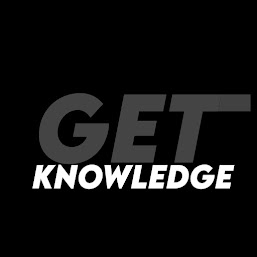Atoms and molecules notes free|Class 9 chemistry.
Hey! Guyzz today I will provide you free Atoms and Molecules free notes.
It will be the best notes u will ever get.
It is based on S.Chand class 9.
ATOM
Atoms are the smallest unit of an element.
Atoms hold the all properties of an element.
Atoms can exist independently.
E.g. H is the hydrogen atom,etc.
The size of atom is called atomic radius which is measured in nano metre.
1nm =10 to the power -9(10^-9)m
That is 1 Nm =1/10^9 metres.
HYDROGEN IS THE SMALLEST ATOM.
Atoms and molecules notes free|Class 9 chemistry
ATOMS ARE ELECTRICALLY NEUTRAL WHY🤔?
Atoms are electrically neutral because according to many experiments done by scientists it was found that the number of electrons and protons in an element is same and there magnitude is also same but their Singh are change. So they got cancelled and there is no overall charge.
That's why atoms are electrically neutral.
LAWS OF CHEMICAL COMBINATION
The law of chemical combination was given by Lavosier and Josheph Proust.
There are three laws of chemical combination,but in class 9 we have to study only two types.
They are as follows:
1)LAW OF CONSERVATION OF MASS
=According to law of conservation of mass the mass can never be created nor be destroyed during a chemical reaction.
The conclusion is that"THE MASS OF REACTANT IS ALWAYS EQUAL TO MASS OF PRODUCT.
(REACTANT'S MASS=PRODUCT'S MASS.
FOR EX: When 1g of Hydrogen reacts with 8g of Oxygen then it forms 9g of Water(H2O).
2)LAW OF CONSTANT PROPORTION
=According to law of constant proportion elements always react in a fixed ratio to form a compound.
For example: The ratio of carbon (c) and oxygen (o) in the compound Carbon dioxide (CO2) is 3:8 that is to form 11g of carbon dioxide we need to react 3g of carbon with 8g of Oxygen.
Atoms and molecules notes free|Class 9 chemistry
DALTON'S ATOMIC THEORY
DALTON'S ATOMIC THEORY is the postulates, assumption given by John Dalton in year 1808.
*POSTULATES (ASSUMPTION) OF JOHN DALTON
1)Atom is the smallest unit of a particle ie every particle is made up of very tiny particles called atoms.
2)Atoms are not divisible, they can't be further divided and atoms can neither be created nor be destroyed.
3)Atoms of same elements are identical in all aspects i.e.mass , size , colour etc.
4)Atoms of different elements are different like in size ,in shape etc.
5)Atoms always combined in a ratio of small whole numbers.
6)The relative number and kinds of atoms are constant in a given compound.
Atoms and molecules notes free|Class 9 chemistry
DRAWBACKS OF DALTON'S ATOMIC THEORY:
There was some wrong (statements) postulates given by Dalton.
1) Atoms is the smallest unit.
CORRECTION: Atoms can be divided further in many fundamental parts that is electrons, protons, neutrons etc.
2) Atoms of different elements have different masses.
CORRECTION: Atoms of different elements may have same masses which is called isobars.
3)Atoms of same elements have same mass.
CORRECTION: Atoms of same elements may have different masses which are reffered to be isostopes.
MOLECULES
Molecules are electrically neutral group of two or more atoms that are held together by chemical bonds.
Molecule is the smallest unit of a compound which retains (hold) all the properties of that compound.
*Molecules of an element constitutes same type of atoms.
*Molecules may be monoatomic, diatomic or polyatomic.
*Molecules of compounds join together in definite proportions and constitute a different type of atoms.
ATOMICITY
ATOMICITY is the number of atoms constituting a molecule.
For example: The ATOMICITY of Sulphur is 8.(S8).
IONS
IONS are the electrically charged particles which is formed due to addition or removal of electrons.
There are two types of ions:
1) Cation= Cation are the electricity positive ions which is formed due to removal of electrons.
E.g.Sodium (Na)
2)Anion
=Anions are electrically negative ions which are formed due to addition of electrons.
E.g. chlorine (cl) etc.
VALENCY.
The combining capacity of an element is called valency.
It means how much extra electrons an atom has .
Point to be noted that "every atom wants to become stable by completing it's octact.
CHEMICAL FORMULA.
The way of representing any compound is called chemical formula.
For example: Sodium chloride's formula is NaCl.
It is done by writing name of both elements and mentioning down their valency in to shortest form then cross multiplying.
Atoms and molecules notes free|Class 9 chemistry
Thanks for your valuable time.
You can check our more post which will help u as a class 9 student.
Copyright ©️ reserved Eduhub (Getknowledge)
By Sahil Patel.



0 Comments